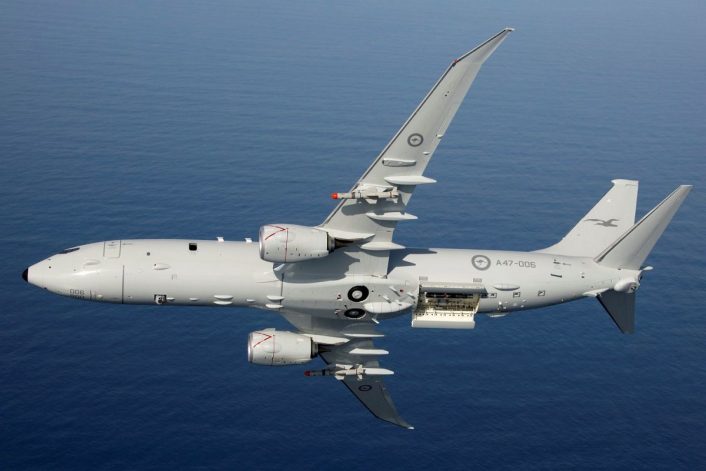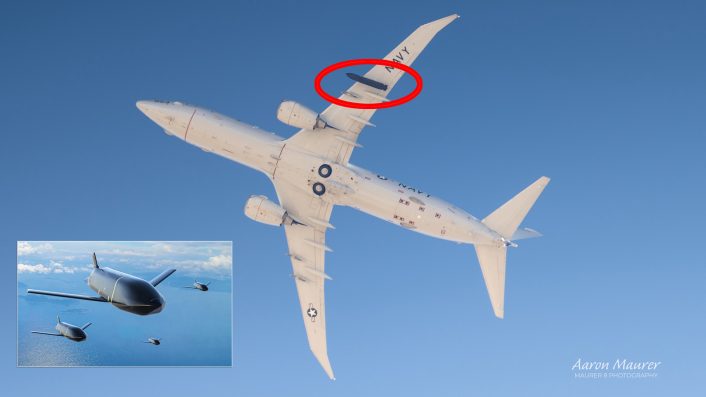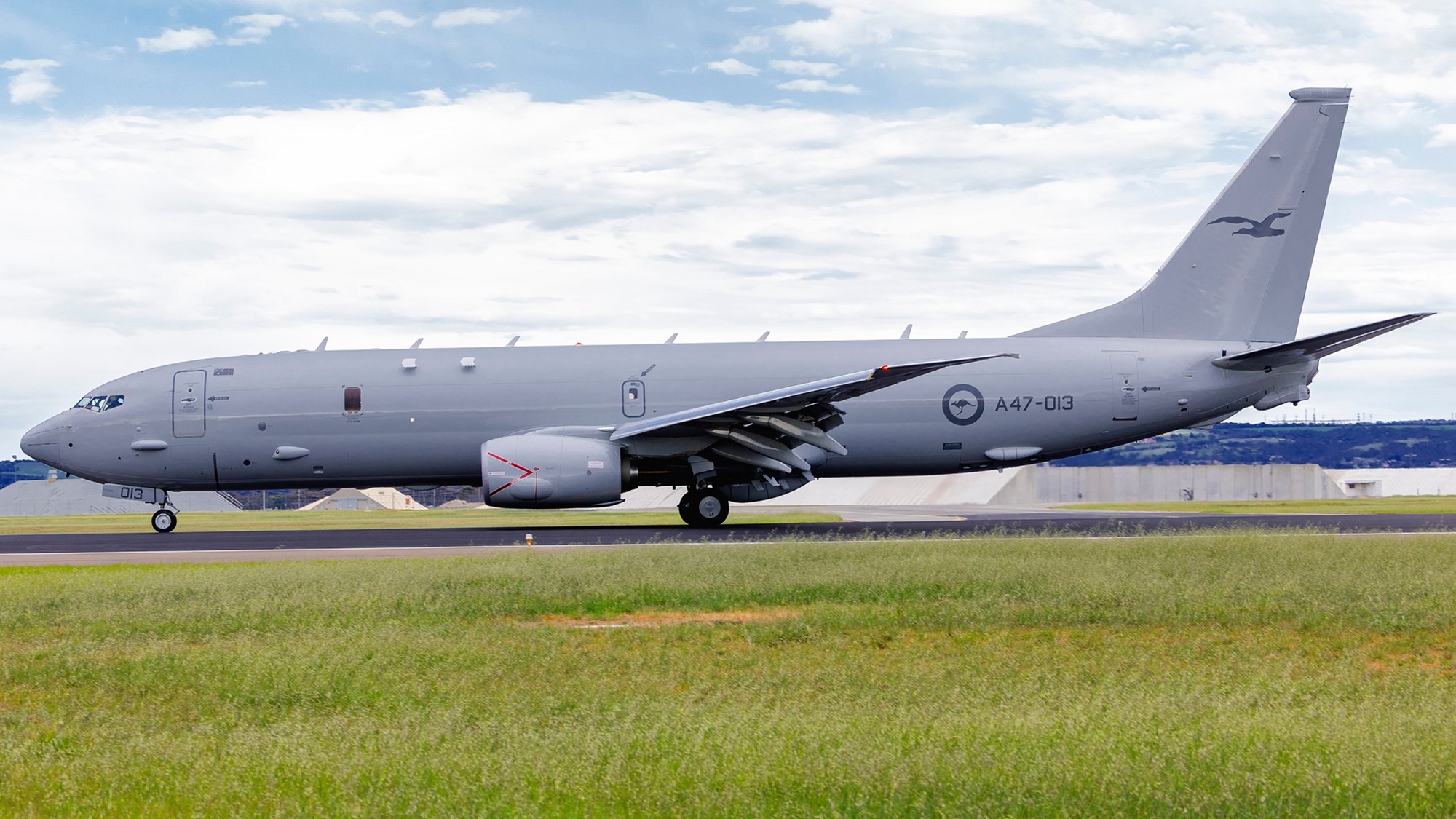Australia will be the first global P-8A operator to receive Increment 3 Block 2 modifications, just months after the US Navy began testing the upgraded aircraft.
boeing has announced the induction of the first Royal Australian Air Force (RAAF) P-8 Poseidon Maritime Patrol Aircraft (MPA) into its facilities to implement Increment 3 Block 2 modifications. At the same time, the company announced that the RAAF is integrating its 13th aircraft into the fleet, following delivery on September 29, and will receive the last in 2026.
Upgrades for Australian Poseidons
The announcement of the implementation of new modifications to the Australian Poseidons comes just a few months after the US Navy began testing the first improved P-8. Australia will now be the first global operator to upgrade its P-8s to the Increment 3 Block 2 modification.
“These upgrades, along with the delivery of the 13th P-8A, mark two important developments for Australia’s defense of its vast coastline,” said Naomi Smith, Director of Sustainment Operations at Boeing Defense Australia (BDA). “Increment 3 Block 2 will provide next-generation detection and guidance for aircrews, while the newest aircraft strengthens fleet readiness and operational reach while maintaining interoperability with the U.S. Navy’s P-8A fleet.”

As part of a four-year agreement, Boeing says RAAF P-8As will receive new antennas, sensors and software to improve computer processing and communication systems, allowing aircrew to search, detect and target the world’s most advanced submarines. The first two aircraft will be upgraded by Boeing at its Maintenance, Repair and Overhaul (MRO) facility in Jacksonville, Florida, while the remaining aircraft will be modified by Boeing Defense Australia at its Deep Maintenance and Modification facility near RAAF Base Edinburgh, South Australia.
The modifications of Increment 3 Block 2
The US Navy began work on the first P-8 to be modified with Increment 3 Block 2 capabilities in early 2024. The aircraft subsequently flew for the first time in the new configuration in June 2025.
These upgrades will allow the fleet to be equipped with full anti-submarine warfare (ASW), anti-surface warfare (ASuW) and intelligence, surveillance and reconnaissance (ISR) capabilities outlined in the P-8A program’s evolutionary acquisition strategy, the service says.
Increment 3 Block 2 provides a significant upgrade to the P-8A’s airframe and avionics systems, including new fuselage frames, radomes, antennas, sensors and wiring. The modification incorporates a new set of combat systems with improved computer processing and increased security architecture capability, a broadband satellite communications system, an ASW signals intelligence capability, a tracking management system, and additional communications and acoustic systems to enhance search, detection and targeting capabilities.


“Increment 3 Block 2 brings the capability that the P-8A was created to provide. These modifications will enable aircrews to search, locate and track the world’s most advanced submarines, allowing the fleet to meet the threat with the capability and capacity necessary to win the fight,” said Capt. Erik Thomas, program manager for the Maritime Patrol and Reconnaissance Aircraft program office, PMA-290. “This delivery demonstrates the PMA-290 team’s excellent work ethic, professionalism and dedication to the fleet.”
Modifications related to Increment 3 Block 2 are currently in progress at the Boeing Maintenance, Repair and Overhaul hangar at Cecil Airport in Jacksonville, Florida. The facility, which continues to upgrade and deliver P-8As to the U.S. Navy, will also be used to upgrade aircraft for international operators.
The Navy said that in response to evolving threats around the world, future P-8A modifications will be implemented through a sequence of rapid capability insertion efforts that build on this new Increment 3 Block 2 baseline. The aircraft will also receive a Signals Intelligence (SIGINT) Capabilityas well as the payloads currently used by the MQ-4C Triton.
Australian P-8s and LRASM
A US Navy P-8 Poseidon aircraft was recently seen carrying an LRASM (long-range anti-ship missile) in flight for the first time, as the service is working to integrate the new weapon into the platform. The integration of the LRASM has been known for a few years, although the weapon was not seen on the P-8 until August 2025.
Australia has committed to significantly enhance the Australian Defense Force’s (ADF) maritime strike capability, with a total of $895.5 million allocated for the procurement of the LRASM. Two RAAF F/A-18F Super Hornets successfully conducted live firings of the AGM-158C off the coast of California in February 2025.


Following the completion of operational testing, the Ministry of Defense says the LRASM is now ready for operational use. The introduction of the weapon will increase the RAAF’s maritime strike range to more than 370 kilometres.
“These weapons systems equip our forces to better protect Australia’s maritime approaches and, where necessary, conduct operations in our region,” Deputy Prime Minister Richard Marles said. “It will be seen in the Super Hornet, Poseidon and F-35 fleets.”
The integration of the LRASM into the Australian Poseidons is likely to coincide with the implementation of the Increment 3 Block 2 modifications.



